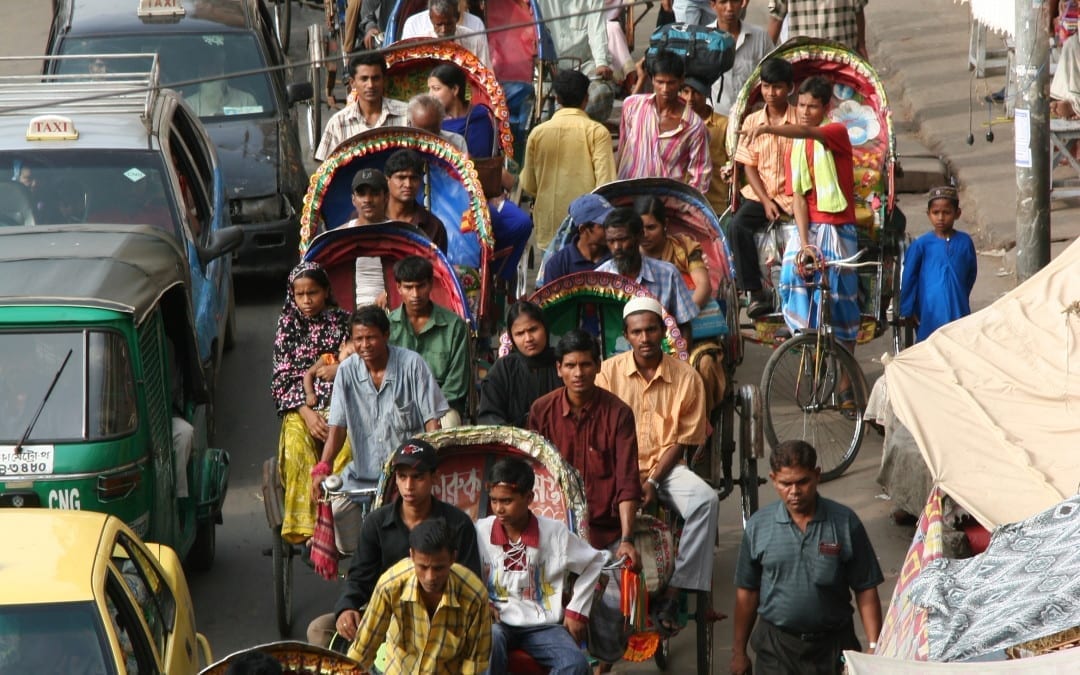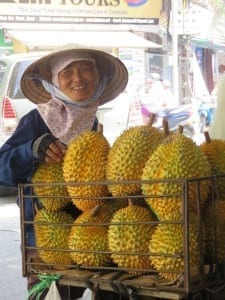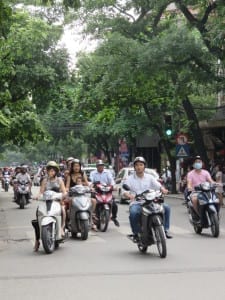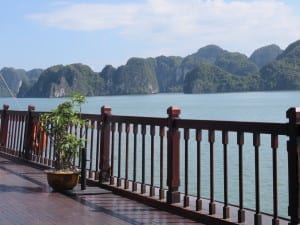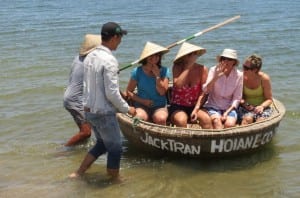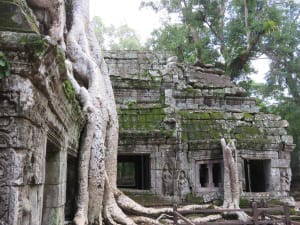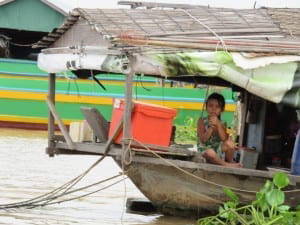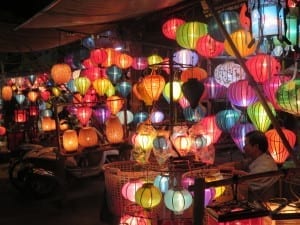At the end of June Nomadic Travel received a place on a fabulous educational trip to Vietnam and Cambodia and Irene was chosen to visit these magnificent destinations. The trip was hosted by Travel Indochina and locally their brilliant Western and local guides assured it all ran seamlessly.
Vietnam, at over 1,000 miles in length, offers astonishing geological diversity – from the cool mountains in the centre, the stepped rice fields of the Ta Van valley in the north, to the most vibrant and steamy city of Saigon in the south, nothing will prepare you for the variety you will experience. And try all the food on offer, this will change your taste for herbs forever – from delicate fresh spring rolls to the robust Pho soup, freshwater fish stews and barbequed duck – local food is a daily highlight.
Our itinerary started in Hanoi and included guided tours of the mausoleum of Ho Chi Minh – a once in a life time must visit for every Vietnamese- the Museum of Ethnology showcasing the troubled but also proud history of this country, the incorrectly ‘Western’ named Hanoi Hilton – the former central prison made famous for the incarceration of the leaders of Vietnam’s National Liberation movement, the French Quarter with its copy of Notre Dame and much more. We enjoyed an early morning walking tour of the Old Quarter, 36 ancient streets where we observed the daily bustle of life around the markets, where peddlers continue to trade the same way they have for centuries and locals eat and chat seemingly incessant. I also visited the Fine Art Museum showing wonderful ninth-century sculptures and was moved by the surprising realistic “revolutionary” (propaganda) art displayed.
A highlight for everyone in the group was the overnight ship stay at Halong Bay. We have all seen the photographs and the site surely is on most traveler’s wish list – we were rewarded with blue skies and calm winds and after a scrumptious lunch I opted to kayak around some of the islands. 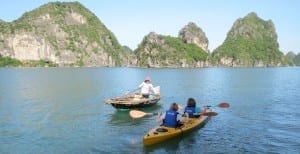
My camera quickly forgotten in the waterproof bag I chose to try and communicate by waving and hand signing to friendly local fishermen, school children enjoying their summer break playing on the wooden pontoons of their floating villages and I could have stayed and gazed forever at the ospreys, kites and sea eagles circling above the breathtaking limestone islets. On the magnificent deluxe boat we enjoyed Tai Chi classes, cooking lessons and some (unsuccessful) fishing as well as an extensive lunch and dinner so that trekking to one of the summits for a final panoramic view felt a welcome exercise, despite the heat and humidity.
Hoi An was our next stop. Prior to the arrival of the French, Hoi An was Vietnam’s ‘window on the world’. Even today, tucked away amongst the backstreets are the houses of merchants from Asia and Europe, trading in high-grade silk and porcelain. Many hours can be spent strolling along the wharf, shopping in the market, trying the local cuisine or having a silk dress or suit fitted. 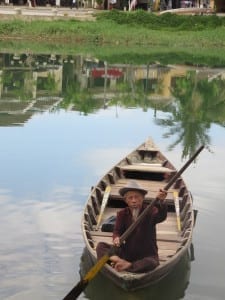
Our group also boarded a boat through ‘Water Cocunut Palm Canal’, a tranquil area little visited and we were introduced to local fishing families showing their different fishing techniques and giving us opportunities to try – had we relied on our catch our lunch would have been vegetarian indeed!
After a short flight to Siem Reap we explored the charming old quarters of this city. Cambodia is gradually recovering from its ravaged past under the rule of the Khmer Rouge and tourism is a vital component in its struggle for stability. Before dawn the next day we entered the ‘great temple’ in darkness, via the little visited east side. We crept along gray cloistered corridors and past the longest stretch of bas-relief carvings in the world after glancing sunrise in front of the main gate. The awe-inspiring temples of Angkor are only one of the Khmer kingdom’s many treasures. 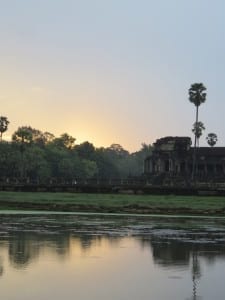
In the next days we also explored the lesser-known, crowd-free temples tangled with roots and barely distinguishable from the encroaching jungle. Not quite experiencing ‘Tomb Raider’ moments we were left with lifetime memories of some of the most impressive monuments built by mankind, presenting themselves, thanks to funding, excavation work and protection by French, Japanese and Korean efforts, much as they did when first discovered in the mid to late 19th century.
Our final trip took us to Tonle Sap Lake and offered great views of the landscapes and agricultural life south of Siem Reap, driving along canals, past floating villages complete with schools, hospitals and even floating pigpens! During the rainy season this lake can swell from 3000 to 7500 square kilometers, making this the largest freshwater lake in Southeast Asia and an ecological ‘hot spot’ designated as a UNESCO biosphere in 1997.
Our last night was hosted by Raffles Hotels. This classic hotel with its colonial grandeur offers a step back in time, respite from heat and traffic on the outside and on our last day I walked the Botanical gardens around the Royal palace, watching local life along Siem Reap river and reflecting on the last 8 days while watching scented smoke swirl from joss sticks placed in offerings at the shrines opposite our hotel. The once so turbulent lands of Vietnam and Cambodia seem to be at peace with their past and fully embrace their fast developing future, ‘Gahm uhn and Aw ko-oon” for the experience – Travel Indochina!

